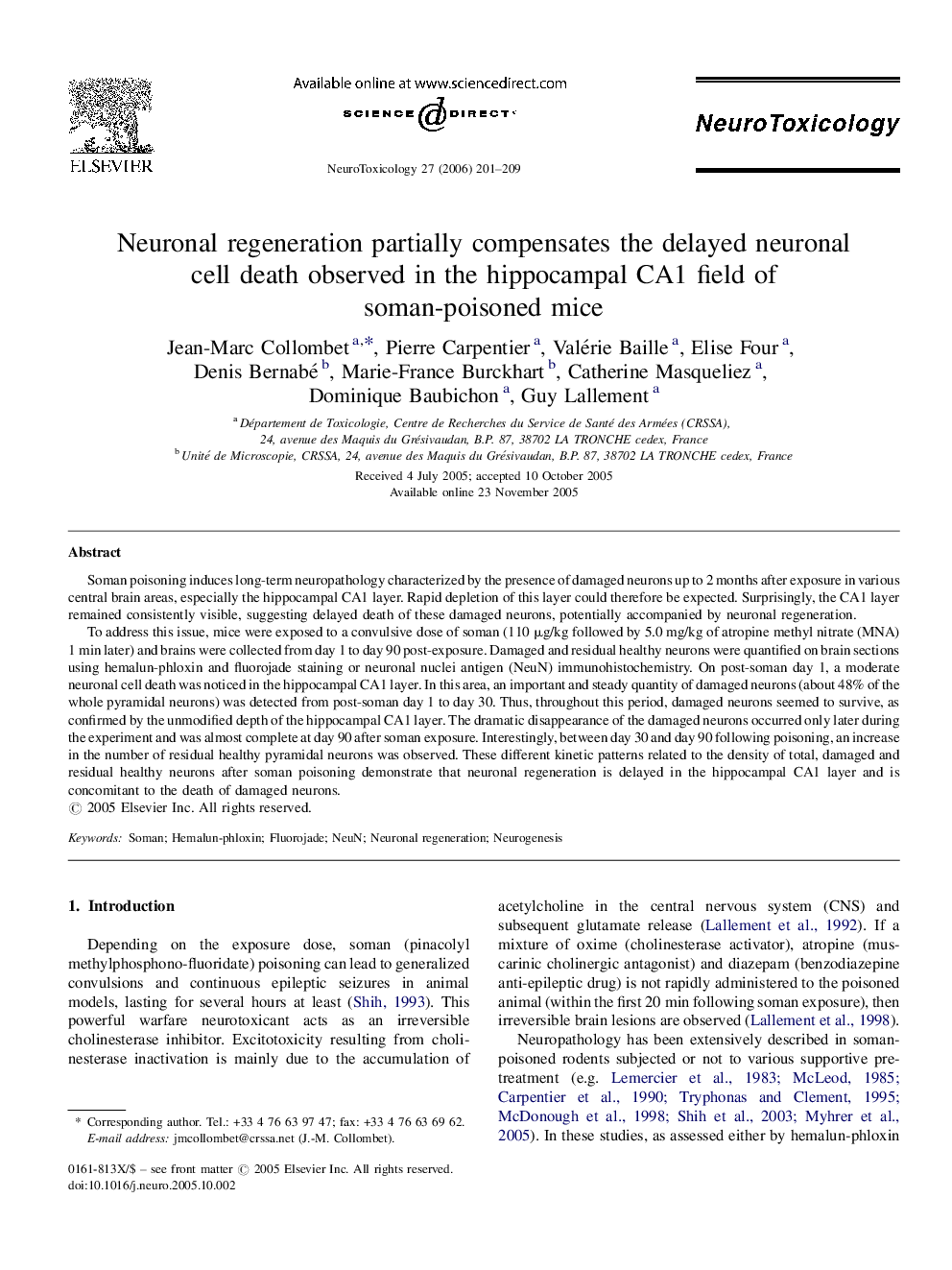| Article ID | Journal | Published Year | Pages | File Type |
|---|---|---|---|---|
| 2590266 | NeuroToxicology | 2006 | 9 Pages |
Soman poisoning induces long-term neuropathology characterized by the presence of damaged neurons up to 2 months after exposure in various central brain areas, especially the hippocampal CA1 layer. Rapid depletion of this layer could therefore be expected. Surprisingly, the CA1 layer remained consistently visible, suggesting delayed death of these damaged neurons, potentially accompanied by neuronal regeneration.To address this issue, mice were exposed to a convulsive dose of soman (110 μg/kg followed by 5.0 mg/kg of atropine methyl nitrate (MNA) 1 min later) and brains were collected from day 1 to day 90 post-exposure. Damaged and residual healthy neurons were quantified on brain sections using hemalun-phloxin and fluorojade staining or neuronal nuclei antigen (NeuN) immunohistochemistry. On post-soman day 1, a moderate neuronal cell death was noticed in the hippocampal CA1 layer. In this area, an important and steady quantity of damaged neurons (about 48% of the whole pyramidal neurons) was detected from post-soman day 1 to day 30. Thus, throughout this period, damaged neurons seemed to survive, as confirmed by the unmodified depth of the hippocampal CA1 layer. The dramatic disappearance of the damaged neurons occurred only later during the experiment and was almost complete at day 90 after soman exposure. Interestingly, between day 30 and day 90 following poisoning, an increase in the number of residual healthy pyramidal neurons was observed. These different kinetic patterns related to the density of total, damaged and residual healthy neurons after soman poisoning demonstrate that neuronal regeneration is delayed in the hippocampal CA1 layer and is concomitant to the death of damaged neurons.
